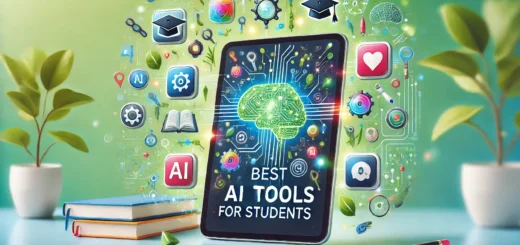How Microlearning is Changing the Way Students Learn in 2025
Introduction
Traditional learning methods are undergoing a massive transformation. In a fast-paced world where attention spans are shrinking and digital tools dominate, a new trend is emerging: microlearning. Rather than sitting through long lectures or reading chapters of textbooks, students now consume content in small, bite-sized segments that are easier to absorb and retain.
In this article, we’ll explore how microlearning is changing the way students learn in 2025, its benefits, key technologies behind it, and how educators can effectively integrate it into modern education systems.
What is Microlearning?
Microlearning is a method of delivering educational content in small, focused units. Each module usually takes between 2 to 10 minutes to complete. It focuses on a single learning objective, making it easier for students to grasp the concept without feeling overwhelmed.
Examples of microlearning include:
- A short video explaining a math formula.
- A flashcard quiz for vocabulary building.
- A 5-minute podcast summarizing a history event.
Why is Microlearning Gaining Popularity in 2025?
Several factors contribute to the rise of microlearning in modern education:
- Short Attention Spans: With students spending hours on social media and short-form content, their ability to stay focused on long lessons has decreased.
- Mobile Learning: As smartphones become learning tools, students prefer learning on-the-go through apps and quick lessons.
- Personalized Education: Microlearning allows students to choose the topics they need help with, making learning more relevant.
Benefits of Microlearning for Students
- Increased Retention
Studies show that learners retain more information when content is presented in short, focused bursts. Repetition and review of bite-sized lessons help improve memory. - Flexibility
Students can learn anywhere, anytime. Whether waiting at a bus stop or during lunch break, microlearning fits easily into any schedule. - Reduces Overwhelm
Large chapters or lectures can be intimidating. Microlearning simplifies complex topics into manageable chunks. - Boosts Engagement
Interactive videos, quizzes, and gamified content make learning fun and keep students engaged. - Encourages Self-Paced Learning
Students can control their learning speed, revisit difficult topics, or skip what they already know.
Microlearning Formats in 2025
Microlearning isn’t limited to videos. Today’s educators and ed-tech companies use various formats:
- Animated Explainer Videos
Simplifies complicated subjects like chemistry reactions or coding logic. - Infographics
Visual summaries of chapters or definitions. - Mobile Learning Apps
Apps like Duolingo, Quizlet, and Khan Academy now focus heavily on microlearning principles. - Short Podcasts and Audio Lessons
Ideal for auditory learners who prefer listening over reading. - Interactive Flashcards
Used widely in language learning and medical education. - Gamified Learning Modules
Students earn points, badges, or rewards by completing short tasks.
How Schools and Colleges Are Using Microlearning
- Supplementing Classroom Learning:
Teachers assign micro-videos as homework to reinforce classroom lessons. - Test Preparation:
Institutions create micro-modules to help students prepare for exams like SAT, IELTS, and GRE. - Skill-Based Learning:
Courses in coding, design, or business offer mini-lessons to teach practical skills efficiently. - Language Learning:
Platforms offer daily 5-minute challenges to boost vocabulary and grammar retention.
Microlearning and EdTech Platforms in 2025
The EdTech industry has embraced microlearning with open arms. Here are some examples:
- Coursera Shorts: Mini-lectures under 10 minutes to support main course content.
- Khan Academy Lightning Lessons: Focused lessons on single math problems or science concepts.
- LinkedIn Learning Clips: Professional skills taught through 3–5-minute tutorials.
- YouTube EDU: Channels offering daily 5-minute academic tips or subject breakdowns.
Microlearning and Artificial Intelligence (AI)
AI is making microlearning even more personalized:
- Smart Content Recommendations: AI suggests what micro-lesson to watch next based on a student’s progress.
- Learning Analytics: Teachers can track which bite-sized lessons are most effective.
- Adaptive Learning Paths: AI builds a custom learning path, adjusting difficulty and content type based on individual performance.
Challenges of Microlearning
While microlearning has many advantages, it also comes with limitations:
- Lack of Depth: Short lessons may oversimplify complex topics that require deep understanding.
- Over-Reliance on Technology: Students without internet access or devices may be left behind.
- Fragmented Learning: Without a structured curriculum, some students may miss the bigger picture.
To overcome these challenges, microlearning should complement, not replace, traditional teaching methods.
Tips for Educators Using Microlearning
- Keep it Focused:
Each micro-lesson should address one clear learning goal. - Make it Visual:
Use graphics, animations, and videos to enhance understanding. - Use Real-Life Examples:
Practical applications make learning more relatable. - Assess Frequently:
Include short quizzes or polls to reinforce retention. - Encourage Peer Sharing:
Let students share their own microlearning videos or notes.
The Future of Microlearning
Microlearning is not just a passing trend—it’s a part of the evolving education landscape. In the future, we may see:
- VR-Based Microlearning: Immersive experiences for subjects like history or biology.
- Blockchain Credentials: Verifiable records for micro-certifications earned.
- Voice-Based Micro Tutoring: AI assistants offering real-time help via voice command.
As education becomes more flexible and student-centered, microlearning will play a major role in lifelong learning and upskilling.
Conclusion
In 2025, microlearning is redefining how students engage with knowledge. By offering personalized, bite-sized content, it caters to modern learners who want flexibility, clarity, and quick results. While it isn’t a one-size-fits-all solution, when integrated wisely with other methods, microlearning can transform education for the better.
Whether you’re a student, educator, or parent, now is the time to explore how this innovative approach can enhance learning outcomes and make education more engaging than ever before.


